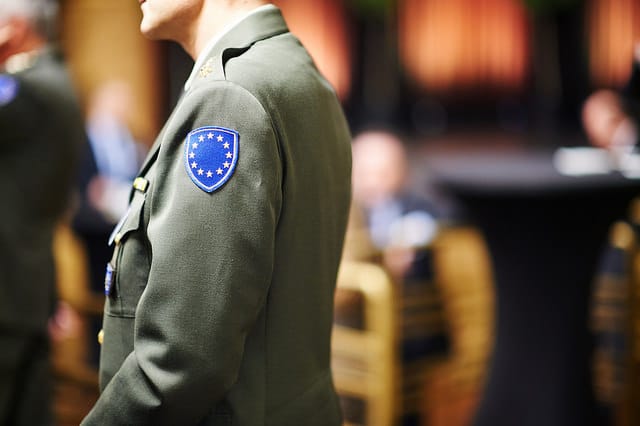
There was no need to wait for a prod from either Trump or Putin, but perhaps the inducement provided by Brexit was necessary. Europe –some of its states at least– needs to spend a little more on defence, but above all to spend better, something that has not always proved to be easy. The European allies, counting only EU members, deploy no fewer than 19 different models of tank. The US has only one. As far as fighter aircraft go, the Europeans manufacture three models: the Eurofighter, in which Spain participates, the French Rafale and the Swedish Gripen. The US has a single model in production, the F-35. And there are other problems and differences, such as the Europeans’ capacity to put their troops and forces into operational mode. Underlying the change of attitude in this debate was the discovery made by Germany two years ago that more than half its fighter and military transport aircraft were inoperative due to lack of spares.
Many European members of NATO have made repeated commitments to devote 2% of their expenditure to defence, an arbitrary figure few comply with. Although 14 EU countries have increased their defence spending as a percentage of GDP since 2014, three of them (the UK, France and Germany) account for 60% of the total. In fact, the Europeans do not need to emulate the US in this area –they do not need large naval battle groups, for example– and it would be preferable to set operational rather than budgetary targets. Because beyond the possibility of a ‘Europe ready to take more responsibilities, and committed to strengthening its common security and defence’, as the declaration to commemorate the 60th anniversary of the Treaty of Rome is likely to affirm, the real question the EU member states should be asking themselves in this domain, severally and jointly, is: what capabilities do we need in order to meet our international risks, threats and commitments?
According to the European Commission, if they cooperate with each other and rationalise their defence spending, EU countries could save €25 billion a year, accounting for 12% of the total, a sum they could earmark for investments in other military, security or indeed unrelated areas. As Elisabeth Braw points out, there is also a problem of interoperability: this is more important today, when various countries are deploying small detachments, than during the Cold War era with its large deployments, and it requires more uniformity.
The EU has been bestirring itself in this province since last year, and the prospect of the UK’s withdrawal has removed the pressure emanating from London to impede progress. At the end of last year the Commission set out a modest European Defence Action Plan, involving €90 million up to 2020 and €500 million per year thereafter, and the Foreign Affairs and Defence Ministers and the European Council subsequently approved an entire programme. The Foreign Affairs and Defence Ministers have this month agreed to create the EU Military Planning and Conduct Capability, a prototype of a general HQ for all states, albeit limited for the time being to actions not involving combat. Last week, the spring meeting of the European Council endorsed the dynamics already underway, and a dedicated conference will be held in Prague in June.
Like the reactivation of the European Defence Agency, these are tentative steps. But headway is being made. It remains a long way from Permanent Structured Cooperation in this field, however; this would be for the willing and able, something that would reflect the multi-speed Europe advocated by the current leaders of France, Germany, Italy and Spain (the Versailles Group) –a concept that is gaining ground–. The taboo of a common defence budget has at any rate been lifted, even if only as far as research is concerned; it is now accepted that the Commission should discuss this subject, and the elements that comprise military planning should be set up.
But it is not enough to spend better unless the Europeans, at least some of them, spend a little more on defence. At a national and European level, by virtue of rationalising, transforming, mothballing and cannibalising some units and systems, ‘more has been done with less’, but this policy, which has been pursued by virtually all NATO and EU countries, has run its course, especially in the face of the more complicated geopolitical environment. Spain –which is among the NATO and EU countries that spends least on defence– moved on from this point of doing more with less two years ago. Indeed, defence spending has increased since 2016, although part of this involves meeting payments on the Special Armaments Programmes entered into in the 1990s, for systems that arguably are not those needed, either now or in the future. In other words, spending more and better would require an in-depth review of the country’s true needs, bearing in mind that arms systems often have a slow planning and development phase and are deployed over a long time, whereas strategic scenarios can change more quickly.
There is an additional problem, set out by Félix Arteaga et al. in a joint study of the ‘appropriate level of strategic autonomy’ countenanced by each member state, not for the EU but for themselves. We face the end of full military autonomy for individual states, it is true, but this does not entail that they confront the so-called ‘non-shared’ risks and threats. Even a joint vision of the risks and threats among the EU member states is lacking. What there are, however, are certain gestures of solidarity, for instance towards the Baltic States, both through NATO and the EU.


